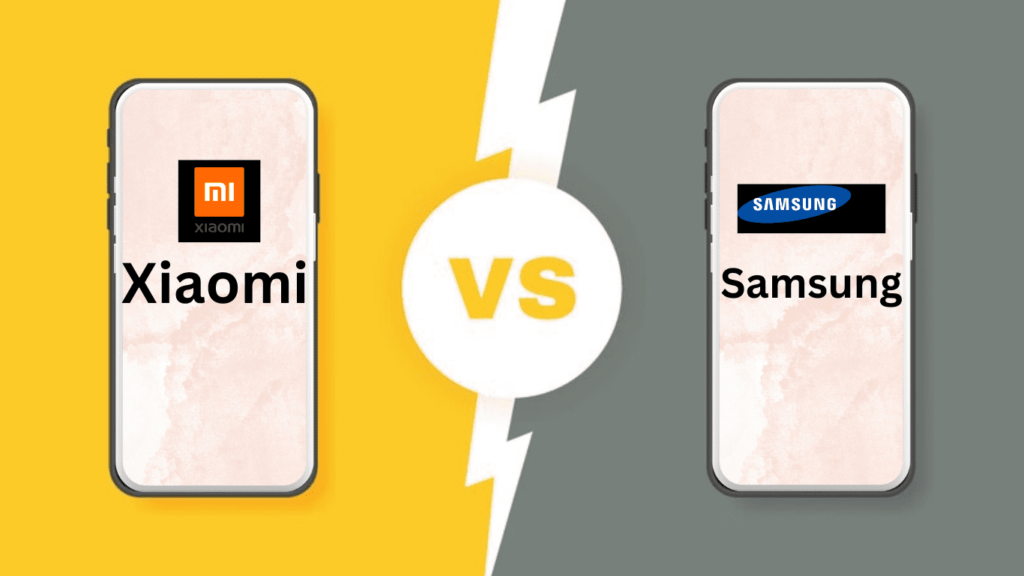India, the most populous country in the world is a battleground for various smartphone-producing giants, with fierce competition and rapidly changing consumer preferences. Among the leaders in this persevering fight for predominance are Xiaomi and Samsung. These two brands have effectively penetrated the hearts and brains of Indian purchasers, charming them with their creative cell phones and vital promoting strategies. In this blog entry, we shall analyze the smartphone rivalry between Xiaomi and Samsung, dissecting their marketing strategies, promoting procedures, item dispatches, and the effect of their endeavors on the Indian market.
Before analyzing the marketing strategies used by the two brands in dominating the minds of Indian consumers, let us first understand the two brands.
Table of Contents
Xiaomi
Xiaomi is a Chinese technology brand founded in the year 2010 by Lei Jun. The brand initially began to manufacture high-quality smartphones, with the vision that quality need not necessarily burn a massive hole in the pocket. In a short span, the phones made by the firm gained prominence in developing nations like India, where cost is a critical factor among customers. Aside from cell phones, Xiaomi has extended its item portfolio to incorporate a great many buyer hardware and way-of-life items. These incorporate smart televisions, PCs, home appliances, wearables, sound gadgets, and brilliant home items. Xiaomi has likewise wandered into the improvement of internet providers, like MIUI (their Android-based working framework), Mi Cloud, and different way-of-life applications.
Samsung
Samsung is a Korean technology brand founded in the year 1938 by Lee Byung-chul which had begun as a trading firm but later diversified in the telecommunications field. It slowly gained popularity as a technology brand globally. SH-100, the first phone produced by Samsung was in the year 1988 and its’ identity as a phone manufacturer was established back then. In the year 2009, the establishment came up with its first smartphone, the Samsung Galaxy i7500. Apart from manufacturing consumer hardware, Samsung has serious areas of strength in different areas too. Samsung is a main producer of show boards, giving screens to cell phones, tablets, TVs, and different gadgets. Samsung SDI has some expertise in the development of batteries for different applications, including cell phones and electric vehicles. Samsung likewise has a huge presence in the memory chip market, with Samsung Electronics being one of the world’s biggest semiconductor makers.
Xiaomi’s Marketing strategies:
Xiaomi earned respect for its disruptive item dispatches, offering cell phones with top-of-the-line particulars at reasonable costs. Their Redmi series, the Poco brand accumulated critical consideration from Indian shoppers.
Samsung’s Marketing Strategies:
Samsung presented lead gadgets with cutting-edge highlights, taking special care of premium and mid-range sections. Their Galaxy S and Note series, as well as creative contributions like foldable cell phones, made it the main player in the Indian market.
Buyer Commitment and Dedication :
Buyer commitment and dedication are basic variables in a brand’s prosperity. Xiaomi constructed areas of strength for fans and brand advocates through virtual entertainment collaborations, elite occasions, and client-driven drives. Samsung, with its broad help organization and after-deals support, zeroed in on consumer loyalty and steadfastness. We will analyze the systems utilized by the two brands to draw in customers and encourage long-haul reliability.
The cell phone showcasing fight between Xiaomi and Samsung in the Indian market is a demonstration of the vicious rivalry winning in the business. By utilizing unmistakable showcasing systems, sending off creative items, and drawing in customers successfully, the two brands have gained significant headway. Xiaomi’s reasonable contributions and local area-building approach have permitted them to capture a critical portion of the overall industry. Meanwhile, Samsung’s image, various item reach, and promoting ability have empowered them to keep serious areas of strength across sections. As the Indian market keeps on advancing, it will be captivating to observe how Xiaomi and Samsung adjust their advertising systems to remain ahead and take care of the developing requirements and inclinations of Indian purchasers.

